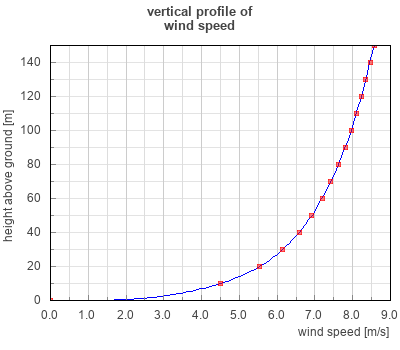Today's post is an example of the wind speed at various heights above the ground. We at Wingardium-Energy use a logarithmic calculation to provide us with an estimation of what the average wind speed can be at a certain height.
On the ground, the wind is strongly braked by obstacles and surface roughness. High above the ground in the undisturbed air layers of the geostrophic wind (at approx. 5 km above ground) the wind is no longer influenced by the surface. Between these two extremes, wind speed changes with height.
As a base we use the measured wind speed at a height of 10 m. For this example let’s assume that the average wind speed in Belgium is around 4,5 m/s. Regionally this can be lower or higher, the KMI notes that the averages range from 5 to 6 m/s at the coastal region and decreases inland to 3 to 4 m/s.
For this example we use the roughness class associated with towns, villages, agricultural land with many or high hedges, forests and very rough and uneven terrain. The graph below shows that the annual average wind speed between a height of 10 m and 150 m does not exceed 9 m/s.
While these calculations are estimations of the actual speeds, it does give us a rough idea what to expect at potential sites and allows us to inform interested parties more accurately what to expect in power-output of small and medium wind turbines.
The environment still plays a role in the actual wind speed, especially on hills and ridges, which is why it remains a good idea to measure the wind for a couple of weeks.

